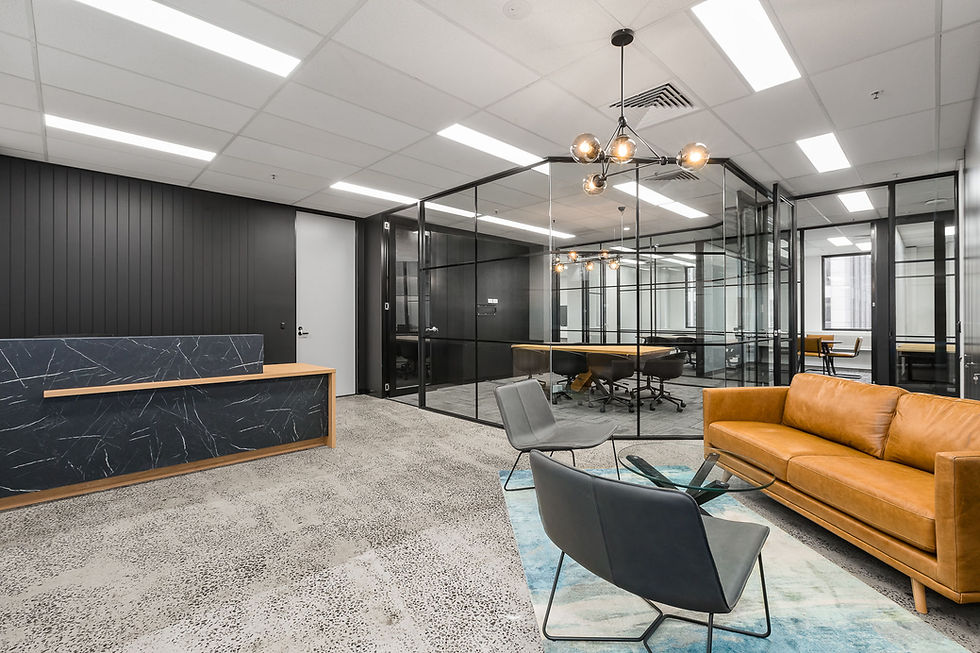Guide To Conducting A Successful Development Feasibility Study
- Ashley Kinsela
- Jun 10
- 6 min read

Have you ever wondered how large commercial buildings, new housing estates, or even smaller multi-unit projects actually get off the ground? Perhaps you’ve seen a ‘Coming Soon’ sign for a new property development and asked yourself, “How do they know it will be profitable?” If you’ve been curious about this process, you’re in the right place. Today, we’re going to explore a development feasibility study from start to finish, showing you what to look for and how to make sure your project is set up for success.
In these next sections, we’ll discuss the ins and outs of creating a thorough development feasibility report. We’ll uncover how to forecast market demand, calculate possible returns, and navigate regulations. Plus, we’ll talk about how to use property development feasibility study templates and spreadsheets to keep your numbers accurate. Whether you’re planning a project yourself or simply want to understand how professional developers approach feasibility, this guide has you covered.
By the end, you’ll have a clear roadmap for organising your own feasibility study in real estate. You’ll see why a well-structured plan helps you spot red flags early. You’ll also learn about the differences between a feasibility study and a business plan, and whether a small-scale project needs the same level of comprehensive analysis as a huge commercial real estate feasibility study. Let’s jump in and show you how this powerful tool fits into the property game.
Why Does Development Feasibility Matter?
Development feasibility matters because it addresses the core question: “Is this project going to work out?” If you rush into a real estate project without analysis, you might end up with cost overruns, legal complications, or a property that nobody wants to buy or lease. By setting aside time to investigate feasibility, you reduce these risks and confirm whether your proposed development is aligned with current market conditions.
Furthermore, a development feasibility study provides you with valuable insights for seeking finance. Banks and other lenders often want to see a property development feasibility report to reassure them that you’ve done your homework. Setting out a realistic timeline, budget, and risk management plan shows stakeholders you’re serious about making the project a success. Simply put, development feasibility is your safety net, helping you minimise surprises and boosting confidence in your decision-making.
Understanding Feasibility Studies In Real Estate

When we talk about a feasibility study in real estate, we’re referring to a methodical process that confirms whether a proposed project can succeed in a given location under existing and anticipated conditions. This process typically involves estimating the real estate feasibility study cost, evaluating market trends, and researching planning guidelines. It’s a balance between creative vision and cold, hard facts.
What Is A Feasibility Study In Real Estate?
A feasibility study in real estate is a structured investigation that estimates potential returns, costs, and obstacles. It considers local property demand, construction costs, environmental regulations, and more. By synthesising these findings, it guides developers in deciding whether the project is worth pursuing. If you’re seeking funding, investors often want this study to evaluate the credibility of your business proposition.
The Role Of Feasibility Analysis And Feasibility Assessment
Feasibility analysis delves deeper into the numbers, focusing on costs, possible profits, and risk management. Meanwhile, feasibility assessment can be seen as the broader overview, looking at whether the project fits community needs and aligns with legal frameworks. Together, these concepts provide a holistic view of whether your land development is bound for smooth sailing or rocky waters.
Land Development Feasibility Study Examples
Land development feasibility can range from subdividing a large rural plot into a modest housing estate to repurposing an underused urban site for mixed-use buildings. For instance, if you’re eyeing a coastal spot in Australia, you’d consider environmental restrictions linked to coastline preservation, local council approval processes, and potential buyer interest—especially if the site sits near tourism hotspots. By studying real land development feasibility study example cases, you’ll see how different factors come into play depending on the site’s location and purpose.
Key Components Of A Property Development Feasibility Study
Drawing a graph of the project's financial, legal, or feasibility requires a feasibility study. Let’s explore some of the main areas you should address.
Market Analysis And Demand Forecast
Market analysis helps you understand whether there’s sufficient demand for the planned type of property. Are there enough families looking for new homes in this suburb? Is there a surge in co-working spaces in a particular business district? You should examine local supply, potential competition, and economic indicators. A demand forecast goes hand in hand with this, predicting rental yields or buyer interest so you can adjust your development plans in line with market realities.
Financial Projections And Real Estate Feasibility Study Cost
Without clear financial projections, you’re basically guessing. Start by listing every cost you can think of, including purchase price, construction expenses, professional fees, marketing costs, and contingency funds. Then compare these to your anticipated income, such as property sales or rental revenue. This is also where a property development feasibility spreadsheet comes in very handy, helping you see how small changes in materials or labour can impact your bottom line.
Regulatory And Legal Considerations
It’s vital to find out whether your planned development aligns with local planning regulations, environmental protection laws, and building codes. Delays in gaining council permissions can drain resources, so check these requirements early. In Australia, for example, navigating local council restrictions and zoning matters is integral to your feasibility approach. Plan ahead to ensure you’re not blindsided by an unexpected compliance hurdle.
How To Do A Feasibility Study For Real Estate

Approaching your feasibility study methodically ensures you don’t miss any crucial steps. Here’s a straightforward way to proceed.
Defining Project Scope And Objectives
Start by clarifying your project’s scope: Are you building an apartment block, renovating an office space, or creating a mixed-use development? Setting clear objectives helps you identify which parts of the feasibility process are most important. Define the size, location, and estimated timing for the project. This step reduces confusion and steers your team in the right direction from the beginning.
Conducting Market Research For Property Feasibility
Next, get stuck into local market data. Investigate current property prices, rental rates, and local competition. Check out forecasted population growth, changes in local employment rates, and upcoming infrastructure projects that might boost desirability. This information clarifies whether there’s likely to be enough buyer or renter interest in your development.
Navigating Environmental And Planning Obstacles
Property developments inevitably affect the environment and the surrounding community. For land development feasibility study example projects, review environmental impact assessments and local council restrictions, especially if you’re near sensitive habitats or heritage-listed sites. Remember: ignored environmental considerations can lead to delays and extra costs.
Practical Tools And Templates
A development feasibility study can feel intimidating if you’re unsure how to break it all down. Luckily, there are templates, spreadsheets, and software solutions that make this simpler.
Using A Property Development Feasibility Study Template
A standard property development feasibility study template walks you through all the main sections, from market analysis to risk management. This saves time and ensures you don’t overlook critical components like legal considerations or environmental assessments. Even if you decide to modify it, having a core framework helps you stay organised and consistent.
Creating A Real Estate Development Feasibility Study Template
Feeling more hands-on? You can create a real estate development feasibility study template from scratch, tailored to your project’s unique needs. Start with the basics—scope, financial projections, and compliance checks—then add sections that reflect your region or property type. By customising your template, you focus on issues that matter most to your development, whether that’s local bushfire ratings in certain parts of Australia or height limits in urban areas.
Leveraging Spreadsheets And Software For Accurate Calculations
From free spreadsheets designed by property professionals to specialised commercial platforms, software tools are excellent for crunching data. They incorporate formulas that adjust automatically when you change figures like land price or building materials cost. You can also factor in interest rates and inflation for more realistic forecasts. By using these tools, you can quickly spot if your project remains profitable under different scenarios, such as minor cost increases or slight dips in market demand.
Conclusion
To sum up, a development feasibility study lays the groundwork for your entire project. It combines financial projections, market assessments, and regulatory checks so that you can move forward with confidence. Rather than banking on optimism alone, you’re using data to decide whether to invest your time, resources, and reputation in a particular venture.







Comments